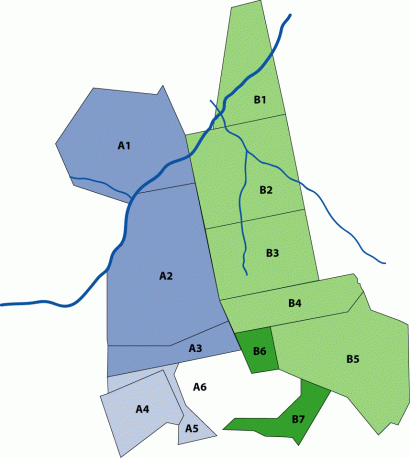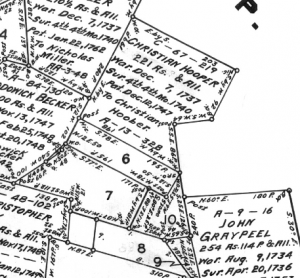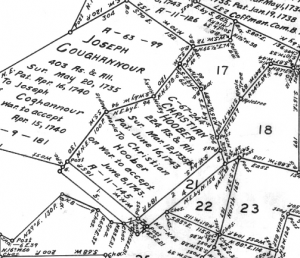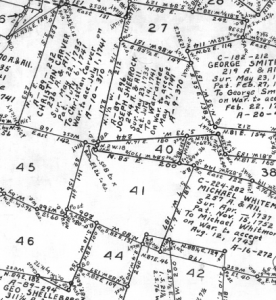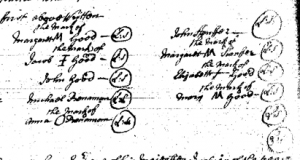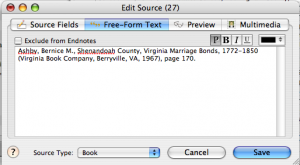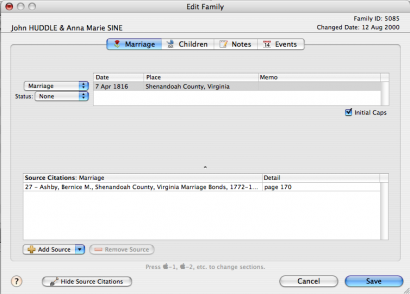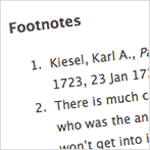Surname Saturday: Henry Huber Family
There were two Henry Hubers living near Pequea and Beaver Creeks in the Martic/Conestoga/Strasburg/Lampeter township area in the mid-to-late 1700s.1 This post is about the family of the Henry Huber who married Catharine Good, daughter of Jacob Good.
Jacob Good patented 106 acres on a branch of Beaver Creek in Martic Township (now Providence), Lancaster County, Pennsylvania in the right of Michael Shank on 12 Apr 1740. (see B3 on map)2 He warranted another tract of 75 acres, also on Beaver Creek, on 24 Jan 1733.3 He did not comply with the conditions of the warrant and 68 acres were warranted to Henry Hoober on 14 Apr 1740. (see B4 on map)4 Both of these tracts are shown as being patented on 15 Apr 1740 to Henry Hoober on the Providence Township Warrantee Map.
Jacob Good wrote his last will & testament on 12 Sep 1739; it was proved 22 Jan 1741. In it he mentions his wife Barbara, brothers Peter and John, sisters Feronica Nisley, Margaret Metz, Ann Strum, and son-in-law Henry Hoover.5
Henry Hoover also patented a tract of 171 acres in Martic Township (now Providence) on 13 Nov 1744. (see B5 on map)6
Assuming he was at least 21 years of age in 1740 when he patented land, Henry was born ca 1719, quite likely before. He married Catharine Good sometime before her father wrote his will in 1739, possibly before 1736. He may be the “loving friend…Henry Huber” named in the 1757 last will & testament of Henry Huber, who owned the adjoining property. (see B1 and B2 on map)7 He was also likely the “loving friend Henry Hoover” appointed by neighbor Johan Jacob Hoover as an executor of his will along with Jacob’s sons John and Martin. (see A1, A2, A3 on map)8
Henry and Catharine (Good) Hoover had at least 3 children:
- Jacob Huber, born bef. 1736 and died bet. 13 Mar and 9 Jun 1788, Martic Township, Lancaster County, Pennsylvania.9,10,11 Jacob married Barbara (___) before 1764. His will names his six children, as follows:
- Henry Huber, born ca 1764, possibly the Henry Huber who married Anna Margaretta Boyer, daughter of Henry & Elizabeth (___) Boyer.
- Jacob Huber Jr., born ca 176612
- Barbara Huber, born ca 176813
- Christian Huber, born ca 1771-177414
- John Huber, born ca 1771-177415
- Martin Huber, born ca 1774 (aged 16 by 25 Aug 1790)16
- John Huber, born bef. 1746 and died bet. 19 Apr 1794 and 21 Apr 1810, Martic Township, Lancaster County, Pennsylvania 17 John married Mary (___) before 1770.
- John Huber Jr.18
- Mary Huber, born bef. 1786, married Peter Huber, son of John and Barbara (___) Huber, grandson of Jacob and Barbara (___) Huber of Martic Township.19, 20
- Barbara Huber, born ca 1770-1780 and died bef. 16 Jun 1841, never married21, 22
- Christina Huber, born ca 1770-1780, never married23, 24
- Esther Huber, born bef 1802 and died 15 Mar 1832, never married25, 26
- Abraham Huber, married Mary (___)27
- Ann Huber, died before 1 Jan 1828, never married28
- Susanna Huber, born ca 1790-1794, never married29, 30
- Elizabeth Huber, born ca 1790-1794, married Henry Krieg sometime bet. 1825 and 3 Mar 183431, 32, 33
- Daughter Huber (possibly Barbara), married Jacob Huber.34 This Jacob may be Jacob Huber Jr., son of Johan Jacob and Anna (___) Huber, grandson of Hans Huber of Earl Township. Johan Jacob and Henry Hoover were neighbors and, presumably, friends.

